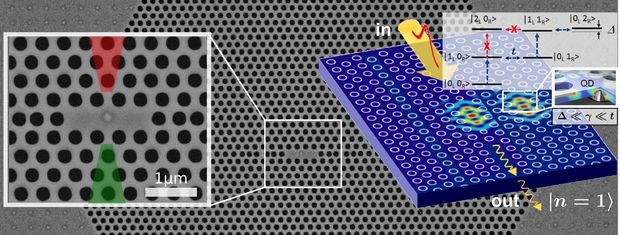The Institute of Semiconductor and Solid State Physics has successfully received EU funding to support projects with the Austrian Science Fund.

As part of the co-funded EU Era-NET project, "QuantERA" focuses on trying to use quantum dots as sources of single light particles. The JKU applications are 2 out of 26 funded projects; a total of 221 projects applied for funding.
The Institute for Semiconductor Physics is now involved in two projects, "CUSPIDOR" and "HYPER-U-P-S", in this EU-wide project network. The projects are also supported by the Austrian Science Fund.
Both projects focus on developing highly efficient radiation sources in which the emission - meaning the individual light particles (photons) - can be controlled on the most exact scale possible. These kinds of radiation sources are needed for, among other things, implementing communication that is inaudible to a third party (keyword: quantum cryptography).
The "HYPER-U-P-S" project (project section manager: Univ. Prof Rinaldo Trotta) uses quantum dots as sources of quantum-mechanical multiple entangled photos. Photons in entangled states have no counterparts in conventional physics so they can only be understood in a quantum-mechanical sense. In contrast, however, this means that these kinds of photons, conventionally impossible mechanisms, such as “beaming” for example, can be realized. Multiple entanglements extend these possibilities and allow, for example, greatly improved quantum communication. "HYPER-U-P-S" is a joint project between the JKU and research facilities in Sweden, Germany, Denmark and Czechia.
"CUSPIDOR" focuses on developing single-photon sources that are compatible with common silicon-based semiconductor industry methods. The goal is to miniaturize quantum-optical structures that could fill a room into Si chips only a few millimeters in size. This kind of integration is a required pre-requisite in order to apply quantum optical technologies - similar to the way developing integrated circuits was required in order to bring about the “digital revolution”. In addition, components and concepts of conventionally integrated optics can be seamlessly merged with quantum optics and already existing optical fiber networks can be used for quantum-optical data transmission. CUSPIDOR is a joint collaboration between the JKU and research facilities in Italy, Ireland, Czechia and is coordinated at the JKU (Univ. Prof. Thomas Fromherz).








